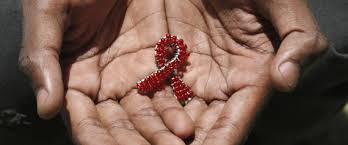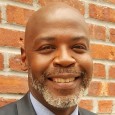
’Grey Invisibles’ is a tag I created to identify gay seniors who fly under the radar especially when it comes to HIV prevention and advocacy. It may seem phrasing a community the color ’grey’ is stereotypical, yet when we reference our elders, the color grey is mentioned. Truthfully, our elders are anything but the dullness of grey and are more in aligned with the colorful life they bring to the world.
Sadly when it comes to seniors, especially in the gay community, they are not asked to sit at the table. It’s often our gay elders who are seen as no longer having value and although their work in the community is appreciated, they’re told to now step aside. When HIV statistics are branded about, a large focus is placed on the young gay community, justifiably so. Yet those same statistics report how gay seniors are facing the same crisis as rates of HIV among seniors are increasing. According to data from the CDC from 2008-2010 it shows that there has been a steady increase in HIV infections in older Americans, 65 years old and older. About 10-11% of newly diagnosed US HIV cases per year occur in older adults. That comes out to about 5,000 to 6,000 new cases of HIV in this age range per year.
The men in the HIV support group highlighted how their lives are impacted with a HIV diagnoses. Their stories are similar struggles the young generation communicate themselves. If you listened you would hear the same difficulties in forming relationships and the fear of rejection based on their status. Tales of managing their medication and the sometime complexity it presents. You would be privy to conversations of men wondering what the future held for them as a person with HIV. And yes, you would hear about love and the desire to still be wanted. To be embraced and share in the warmth of someone special who accepts you, HIV and all. But because they are ’Invisible’ their stories falls on deaf ears.
What we fail to realize is the seeking of affection never ends and because of this unmet desire, the elder positives find themselves part of a growing HIV epidemic. Partly because today HIV prevention efforts don’t target the LGBT senior population as a belief is held seniors are not participating in sex. Not only are seniors having sex, they also have multiple partners which calls for prevention efforts. In addition most gay seniors receive inadequate health screening for HIV if they receive it at all. This is compounded by the discrimination senior’s face in the health community based on their sexuality and age.

To make gay seniors visible and part of the HIV discussion, some key steps can be made:
1. Create visual HIV/Prevention messages targeted exclusively to the elder community
2. Enforce inter-generational participation within HIV agencies and start inviting the aging community to have a seat at the table.
3. Stop placing gay seniors as an afterthought and include their voices at the beginning of HIV planning initiatives.
4. Recognize elders are continuing to have sexual relations and need the same prevention tools available to the younger generation
5. Provide education directed to health officials to have a greater understanding of the LGBT aging population along with the challenges people of color aging community faces
As stated before I and others will soon be considered one of the aging communities. I know with all my contributions within the LGBT community, unless we start including our gay elders, my voice will be irrelevant. I have consistently worked to have inclusion of elders when it relates to my work in the LGBT field. Recognizing the silence they face I challenge the younger community to not simply respect your elders but also recognize they are worthy of our continued attention and most importantly, they are still very much a part of our community.
Although I gave some tips on how to include gay elders in HIV prevention, are there any efforts that can be highlighted. Love to hear what is working.







1 Comment
1 Comment